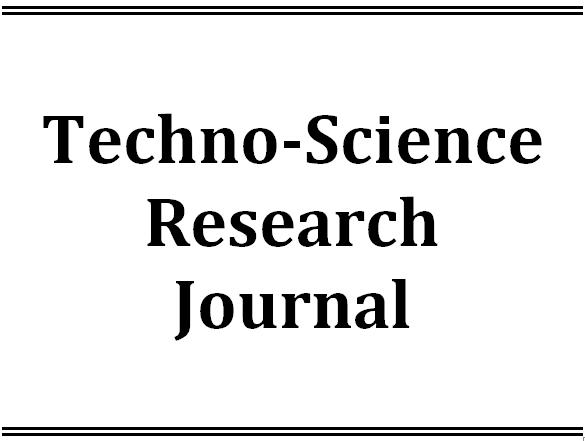Latest Issue
Empowering Education with Online Khmer Handwritten Text Recognition for Teaching and Learning Assistance
Published: August 30,2025Undergraduate Student Dropout Prediction with Class Balancing Techniques
Published: August 30,2025Status of Seawater Quality at Koh Rong Island, Sihanoukville, Cambodia
Published: August 30,2025Low-Complexity Detection of Primary Synchronization Signal for 5G New Radio Terrestrial Cellular System
Published: August 30,2025Word Spotting on Khmer Printed Documents
Published: August 30,2025Tuning Hyperparameters Learning Rate and Gamma in Gym Environment Inverted Pendulum
Published: August 30,2025Examining Passenger Loyalty in Phnom Penh Public Bus System: A Structural Equation Modelling Approach
Published: August 30,2025Prediction on Load model for future load profile of Electric Vehicle charging demand in Phnom Penh
Published: August 30,2025Economic Study on Integrating PV-DG with Grid-Tie: Case Study in Cambodia
Published: August 30,2025REMOVAL OF HEAVY METALS FROM POLLUTED DUG-WELL WATER (CASE STUDY: IN YOGYAKARTA URBAN AREA) BY UTILIZING ACTIVATED ZEOLITE AND BENTONITE IN ADSORPTION EXPERIMENT
-
1. ITC
Academic Editor:
Received: January 20,2024 / Revised: / Accepted: January 21,2024 / Available online: June 01,2016
Due to human activities such as batik home industries, abattoirs, and tanneries, the existence of heavy metals in dug-well water has been known as the cause of groundwater pollution in Yogyakarta City. To treat this dug-well water, a batch adsorption experiment by utilizing the activated zeolite and bentonite was carried out. Prior to the treatment, the zeolite and bentonite were characterized by means of XRD, SEM, XRF, and various ICP and modified to improve their CECs by thermal activation process, whereas the dug-well water was initially analyzed for certain heavy metals like Cd, Cu, Fe, Zn, Pb by AAS. In the course of treatment, the activated zeolite and bentonite powders at the same amount of 1g, 2g, 4g, 8g, and 15 g were separately put into the natural dug-well water sample of 250 ml; all the solutions were afterwards mixed by magnetic stirrer and kept for 24 hours to reach the equilibrium condition.The results showed that the activated zeolite which contains Ca-clinoptilolite and bentonite which mostly consists of Ca-montmorillonite are potential adsorbents with the selectivity series as Pb>Cu>Zn>Fe>Cd if the metals in their contents are not taken into account. In contrast, if considered, they polluted the dug-well water.

